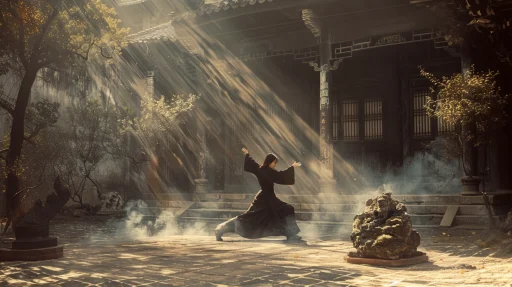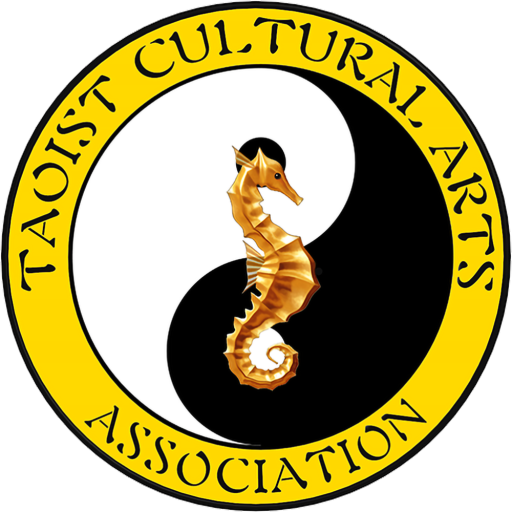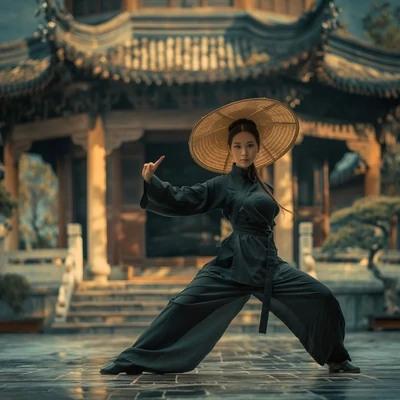
Join us at Caludon Castle Sports Centre, Axholme Road, Wyken, Coventry, West Midlands, CV2 5BD for a Tai Chi and Tai Chi Weapons course on May the 4th and 5th and learn to feel the force!
Tai Chi and Qi Gong – Saturday May 4th 2024 10 a.m to 4 p.m
Tai Chi Weapons – Sunday May 5th 2024 10 a.m to 4 p.m
Beginners welcome –
Experience Tai Chi’s benefits including stress relief, improved focus, energy boost, enhanced posture and flexibility, improved immunity, and emotional balance. We offer discounts for students, low-income individuals, and block bookings.
Welcome to the Seahorse Arts store
Featured Products
The Dragon
The dragon, a creature of myth and legend, holds a place of unparalleled significance in Chinese culture. Unlike the malevolent dragons of Western mythology, the Chinese dragon symbolizes power, strength, and good fortune. It is deeply woven into the fabric of Chinese history and folklore, representing the harmonious blend of the yin and yang, the fundamental duality that permeates the universe according to Taoist philosophy.
Historically, the dragon was the emblem of the emperor, embodying the sovereign’s power and wisdom. It appeared on the robes of the emperor, on the walls of palaces, and in the art that adorned ancient scrolls. The dragon’s image pervades Chinese festivals, such as the Dragon Boat Festival, and dances, where the sinuous movements of the dragon are mimicked in elaborate performances that are believed to bring luck and prosperity.
The dragon’s symbolism extends beyond mere power and authority; it is also a harbinger of creativity, vitality, and the life-giving waters of rain. It represents the quintessence of the yang energy—the active, masculine force in the universe that complements the passive, feminine yin. This duality and balance are central themes in Taoism and are mirrored in the practices and philosophies that define this spiritual tradition, including Tai Chi.
In the vast tapestry of Chinese culture, the dragon thus stands as a symbol of the natural world’s potency and the spiritual principles that govern it. Its significance is a testament to the depth and richness of Chinese mythology and its enduring influence on the cultural and spiritual life of the people.
The Dragon and Taoism
In the heart of Taoist philosophy, the dragon symbolizes the essence of the Tao itself—mysterious, unfathomable, and all-encompassing. Taoism, with its roots deep in the ancient soil of Chinese spirituality, views the dragon as a guardian of wisdom and a manifestation of the ultimate reality. The dragon’s ability to navigate freely between heaven and earth, to disappear and reappear at will, exemplifies the Taoist ideal of living in harmony with the Tao, the fundamental principle that underlies and unifies all things.
Taoism teaches that the universe operates according to the dynamic interplay of yin and yang, opposing but complementary forces. The dragon, as a yang symbol, represents the active, bright, and fiery aspects of existence. Its counterpart, the phoenix, often symbolizes the yin aspects—receptivity, coolness, and water. Together, these mythical creatures embody the Taoist quest for balance and harmony within the self and the world.
The dragon’s journey through the skies and seas also mirrors the Taoist path of spiritual cultivation, which emphasizes the importance of flexibility, adaptability, and the seamless integration of opposites. Taoist practitioners seek to emulate the dragon’s wisdom and power in their quest for enlightenment, drawing on its symbolism to deepen their understanding of the Tao and its manifestations in daily life.
Through meditation, Tai Chi, and other Taoist practices, individuals strive to cultivate their internal energy (qi) and achieve a state of effortless action (wu wei), where actions are aligned with the natural order of the universe. The dragon, in its majestic flight and boundless freedom, serves as a potent symbol of this ultimate goal, inspiring practitioners to transcend the limitations of the physical world and soar towards spiritual awakening.
Dragon Stance
It is in the dragon stance, one of the many stances within Tai Chi, that the symbolism of the dragon comes to the forefront, encapsulating the yang energy that is so central to Taoist thought.
The dragon stance in Tai Chi is not merely a physical posture; it is a manifestation of the inner strength, flexibility, and vitality that the dragon represents. Practitioners of Tai Chi adopt this stance to cultivate yang energy, drawing on the metaphorical fire of the dragon to ignite their own internal power. The stance embodies the qualities of the dragon—its strength, dynamism, and the fluidity of its movements through the heavens.
Executing the dragon stance involves a combination of balance, focus, and controlled breathing, mirroring the dragon’s mastery over the elements. This stance, like the dragon’s flight, encourages the free flow of qi throughout the body, enhancing physical health and spiritual well-being. It also serves as a tool for meditation, allowing practitioners to connect with the deeper aspects of their psyche and the universe at large.
In Tai Chi, the dragon stance is more than just a technique; it is a symbolic journey towards achieving harmony with the Tao. It represents the aspirant’s path to embodying the dragon’s wisdom, strength, and flexibility, integrating these qualities into their practice and their lives. Through the dragon stance, Tai Chi practitioners engage with the ancient legacy of the dragon, embracing its power as a source of inspiration and transformation.
Integrating the Dragon’s Essence into Practice and Life
The journey through Tai Chi and the exploration of the dragon’s symbolism culminates in the integration of these principles into daily life. Embodying the dragon’s essence means more than performing stances or engaging in physical practices; it is about adopting a way of being that reflects the balance, strength, and wisdom the dragon represents. Practitioners are encouraged to carry the qualities cultivated through Tai Chi—the flexibility of the dragon, its dynamic energy, and its serene power—into every aspect of their existence.
This integration involves a conscious effort to live in harmony with the Tao, to embrace the flow of life with grace and resilience. It means facing challenges with the strength and courage of the dragon, harnessing one’s inner resources to navigate life’s ups and downs. The practice of Tai Chi, with its emphasis on the dragon’s symbolism, offers valuable lessons in adaptability, patience, and the importance of maintaining a balance between action and inaction, between exerting and yielding.
To embody the dragon’s essence is also to cultivate a spirit of generosity and wisdom, to approach others with the same benevolence and strength that the dragon symbolizes. It invites practitioners to see beyond the surface, to recognize the interconnectedness of all things, and to act with an awareness of the broader impact of their thoughts and actions.
The path of Tai Chi and the way of the dragon are not just about personal development; they are about contributing to the well-being of the community and the world at large. By integrating the dragon’s qualities into practice and life, individuals can become agents of positive change, embodying the virtues of balance, harmony, and resilience that are so needed in today’s world.
In conclusion, the dragon’s significance in Chinese culture, Taoism, and Tai Chi offers a rich wellspring of wisdom and inspiration. Through the practice of Tai Chi and the embodiment of the dragon’s essence, individuals can navigate the journey of life with strength, grace, and an enduring sense of harmony with the natural world. The dragon, with its deep roots in ancient philosophy and its wings spread wide across the heavens, remains a powerful symbol of transformation and enlightenment for those who seek to walk the path of the Tao.
The Pearl
The Dragon’s Pearl is a significant symbol in Chinese mythology and art, often depicted with dragons chasing or holding onto a flaming pearl. This imagery is rich in symbolism and carries multiple layers of meaning, representing wisdom, prosperity, power, and the pursuit of perfection.
Wisdom and Enlightenment
The pearl is frequently considered a symbol of wisdom and enlightenment. In the context of the dragon, which itself is a symbol of strength, power, and benevolence, the pearl represents the ultimate treasure, not in material terms, but as the wisdom and knowledge that comes with enlightenment. The image of the dragon chasing the pearl suggests the continuous pursuit of wisdom and the efforts one must make to achieve enlightenment.
Prosperity and Good Fortune
The Dragon’s Pearl is also seen as a bringer of wealth and good fortune. In Chinese culture, pearls are valued for their beauty and rarity, making them symbols of wealth and luxury. When associated with the dragon, a symbol of auspicious power, the pearl’s significance is magnified, suggesting that the holder or seeker of the pearl will be blessed with prosperity and success.
The Cosmic and Celestial Power
The flaming pearl is sometimes interpreted as a metaphor for celestial or cosmic energy. In artworks, the pearl often appears with flames swirling around it, emphasizing its otherworldly and potent nature. This representation underscores the dragon’s connection to the heavens and its role as a guardian of celestial forces. The pearl, in this context, symbolizes the unity of heaven and earth, with the dragon acting as a bridge between the mortal world and the divine.
The Pursuit of Perfection
The pursuit of the pearl by the dragon can also be seen as the pursuit of perfection and the ultimate truth. Just as the pearl is formed in a manner that requires time and patience, so too is the journey toward perfection or enlightenment—a process that is ongoing and requires dedication and perseverance.
Symbol of the Moon
In some interpretations, the Dragon’s Pearl is associated with the moon, reflecting its luminous quality and its ability to cast light in the darkness. This association further enhances the pearl’s symbolism of enlightenment, as it serves to illuminate the path toward wisdom and understanding.
The Dragon’s Pearl, with its multifaceted symbolism, is a powerful emblem in Chinese culture. It encapsulates deep spiritual and philosophical ideals, emphasizing the importance of wisdom, the benefits of pursuing spiritual and material wealth, and the perpetual journey toward achieving harmony and understanding. Through its depiction in art and mythology, the Dragon’s Pearl continues to inspire and remind us of the endless pursuit of life’s most precious treasures.
#TaiChi #CoventryCourse #CaludonCastleSportsCentre












